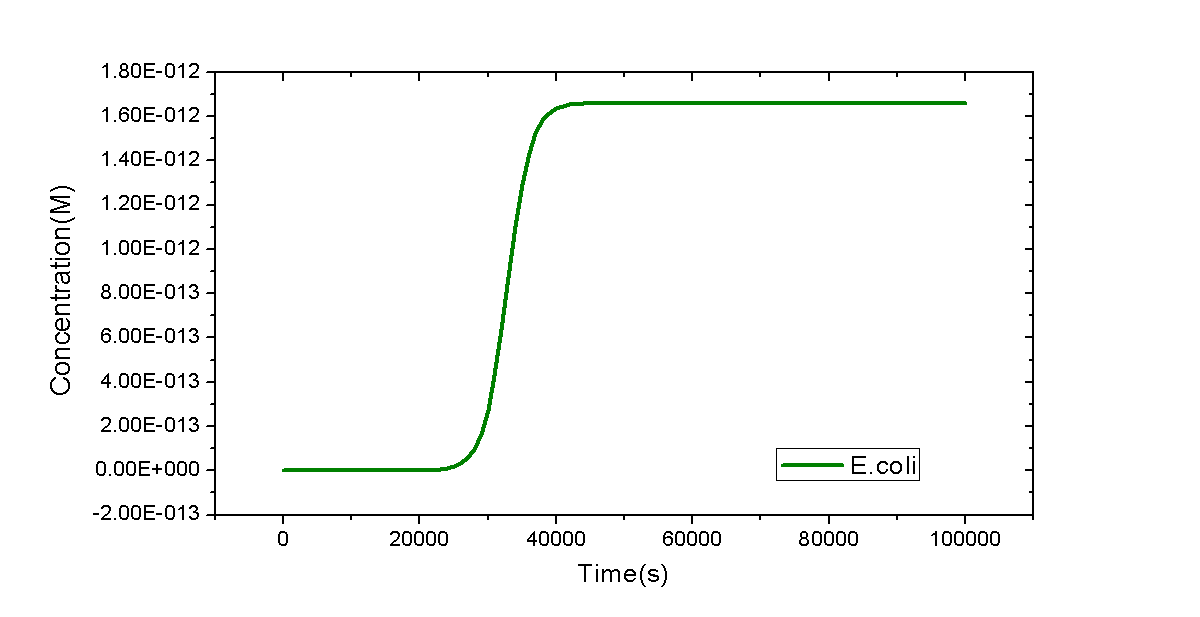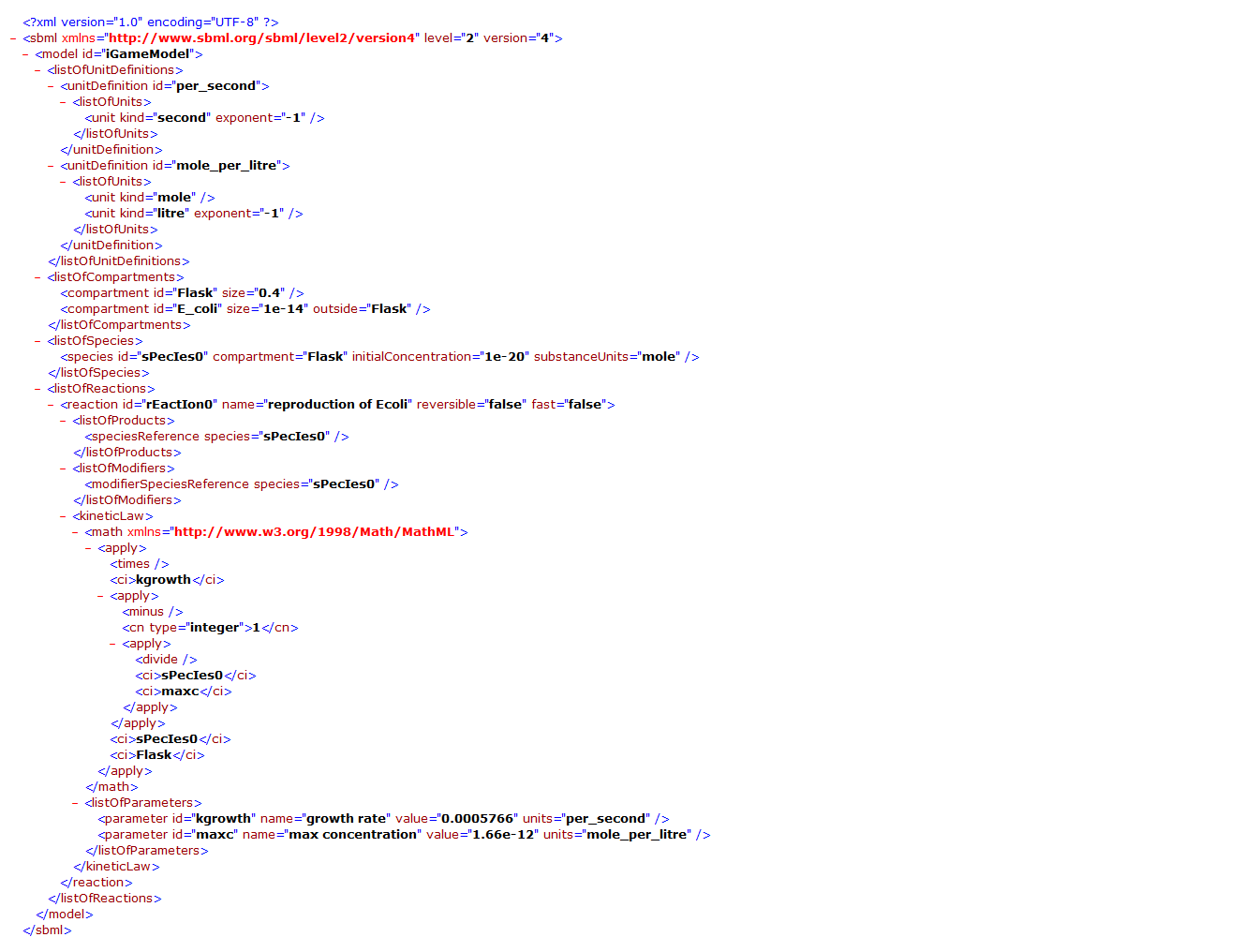Team:USTC Software/demo
From 2010.igem.org
Using C-N Model we can model systems with great complexity
The simplest example with only E.coli cell
introduction
As the simplest example, a model of a flask with only E.coli cells inside will be shown. Only one reaction will be considered: the replication of E.coli. However, it is not trivial. MoDeL enables users to add such an auto-catalytic replication reaction easily and conveniently. The minimal database used for this model could be download here.
database construction
We only provide key points regarded with construction of this minimal database. To add the auto-catalytic reaction in the Reaction container, a species with only part E.coli is required. It has the simplest Chain-Node model format: only one chain with one part and no trees. The auto-catalytic reaction has one modifier and one product and they are both referred to E.coli defined in Species container. Since they are compartment-type species (species representing a compartment), attribute itself of compartmentLabel node in modifiers and products definitions should be set the same with label of the compartment they represent in the compartments definition. It ensures that the product and the modifier are the same, avoiding wrong mismatch of the product which is different with the modifier. Since number of E.coli cells will reach a stable level in a long time course, we use <math>k_{g}(1-C_{E.coli}/C_{max})C_{E.coli}V_{Flask}</math> as the reaction rate, where <math>k_{g}</math> is the growth rate of E.coli, <math>V_{Flask}</math> represents the size of E.coli, and <math>C_{E.coli}</math> and <math> C_{max}</math> are concentration of E.coli and its max concentration in the flask, respectively. The negative sign in the rate equation indicates self-repression of E.coli cells.
modelling and simulation
Model written in SBML format is shown below. The dynamic curve of E.coli replication is plotted by time course simulation. Exactly speaking, dynamic behaviors of biological system are meaningless after 4000s because of termination of reproduction of E.coli. However, the curve is in qualitative agreement with that from experiments in the first and second stage of reproduction of E.coli.
Basic example with pLac-LacI repression system
introduction
MoDeL provides poweful supports for description of interactions between two species. No interactions exist in the previous example. In this example, we will construct a plasmid backbone with promoter, rbs, coding sequence and terminator inserted in and transform it into E.coli. LacI repressor are produced after two steps of transcription and translation. It binds with itself to form a dimer and then a tetramer, which could bind with promoter LacI on the plasmid to repress the process of transcription. Besides, replication of E.coli cells, degradation of proteins and mRNAs, as well as dilution due to replication of cells, are also considered.
database construction
Actually, it is a complex molecular process and takes many steps to complete a transcription reaction. It includes binding and initiation, elongation, and termination. So does translation reactions. The first version of MoDeL DOES NOT support transcription and translation reaction templates and they will be handled by our core program of iGame.
 "
"

